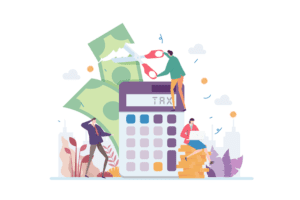
List the name of your taxes and other fees on the left side under the subtotal and their cost on the price column. Write the exact date at how to fill out a receipt book the top page of your receipt when the transaction occurs. It can be the date when you receive payments or when your client receives your products or services. As the name suggests, a receipt book consists of multiple detachable forms that serve as proof of payment. These booklets are usually pre-numbered chronologically and have the receipt headings in place. You can easily print out a receipt book template online or buy one at any office supply store.
What are the differences between an invoice vs. a receipt?
The white receipt is AI in Accounting called the original receipt, which is usually on top and is given to customers. Meanwhile, the yellow receipt is a duplicate or carbon copy of the white receipt that the business keeps for documentation. There are always taxes and fees that go into a transaction, and these also need to be tracked if you want to maintain legal compliance — and you really do. Whenever a customer makes a purchase, write the date and receipt number (if it’s not already on the receipt) as the first step. If you ever need to go back and find a specific transaction, you can use the date to quickly locate the receipt in your book and the number to make sure it’s the correct one.
- And don’t forget to write the tax due at the bottom of your receipt.
- Practicing diligent record-keeping not only benefits your business but also provides your customers with the necessary documentation for their own financial management.
- Join over 1 million businesses scanning & organizing receipts, creating expense reports and more—with Shoeboxed.
- Shoeboxed, the #1 receipt scanner app, is here to help you find out exactly what a receipt book is and how to fill out a receipt correctly.
- One often overlooked aspect of a professional-looking receipt is the customer experience.
Financial Management and Receipt Tracking

A receipt book that is consistently and accurately filled out allows you to monitor the development of your business, manage cash flow, and make informed decisions. Digital receipt book solutions include various apps and software that can generate electronic receipts, monitor business expenses, and even produce paper copies for records. Issuing receipts is legally required for providing proof of purchase, recording taxes, and avoiding potential legal consequences for inadequate record-keeping. To write a receipt for cash received, include the date, dollar amount, payer name, description of services or products provided, department name and signature of the cash handler. Additionally, contact information, taxes imposed, discounts, itemized list of items sold and their quantity and price should also be included.
How can I avoid common mistakes when filling out a receipt book?
- Now, add all the numbers to get the grand total or the amount that your customer has to pay.
- Your signature serves as a guarantee of authenticity and bolsters customer trust.
- Precise dating of each receipt is a fundamental aspect of maintaining chronological order and tracking financial transactions over a period.
- You can leave your copy of the transaction in your receipt book until you do bookkeeping for your sales.
- Double-check your information, write clearly, and review calculations to avoid common mistakes when filling out a receipt book.
- A receipt book typically consists of multiple sets of individual receipt templates, each designed to help you capture essential transaction details.
- As the name suggests, a receipt book consists of multiple detachable forms that serve as proof of payment.
The receipt shows you received payment for your product or work from your client or customer. This is usually sent after the product or service has been delivered but before the customer has paid for it. Customary practice is to issue an invoice after one’s work is complete. Give the original to the tenant (often the white receipt on top) and keep a copy for yourself (often the yellow copy underneath). For each item, write down its corresponding price at the end of the row or line. Always remember to multiply the single product’s price by its quantity first if you sell more than one unit of that product.

This type of receipt book is handy if your business has many departments involved in the sales process. A receipt book is a critical document because it helps you keep track of your financial transactions and serves as solid evidence for tax purposes. And if you ever need to track down a receipt in the future, it might take hours of going through filing cabinets to get to it. For easy storage and tracking, it’s a good idea to digitize your receipts. In many cases, this will be a list of items the customer purchased from your store.

Utilizing Technology for Receipt Book Management
To maintain this organization, it’s important to create receipts consistently and accurately, using proper retained earnings receipt headings. This level of organization enables you to quickly locate specific receipts, streamlining processes like tax filing or expense tracking. This comprehensive documentation not only ensures legal compliance but also provides customers with a clear account of their purchase. If you’re using a traditional carbon copy receipt book, the customer gets the original white receipt (which is on top), and the business keeps the yellow duplicate. However, most companies today use software to make and track receipts. In that case, the customer will keep the printed version while the business saves a digital copy in their records.


